Beginnings and Causes
The Arab Uprisings or Arab Awakening, also commonly referred to as “Arab Spring” 1, describe a series of upheavals and demonstrations that happened in several countries of the MENA (the Middle East and North Africa) region in 2010/11, starting in Tunisia.
The event which led to the Tunisian uprising was the self-immolation of 26-years old street vendor Mohamed Bouazizi in December 2010 in Tunisia. His self-ignition served as a powerful statement and motivated thousands of Tunisians to protest against their government. Notwithstanding, Tunisia was not the only country that experienced unrest. The incident that led to protests in Tunisia is often considered a catalysator for the following unrests across the region. Analyses also regularly refer to it as the “spark” that inited the uprisings.
In January 2011, only days after the ousting of Ben Ali, protests erupted in Egypt to remove long-term ruler Mubarak. After weeks of protests, most notably in Cairo’s Tahrir Square, Mubarak was forced out of office. Despite the ousting, a time of political chaos and further repression of Egyptian citizens ensued.
Following Egypt, violent protests erupted in Bahrain, Syria, Yemen, and Libya, leading to political chaos and, in some of these countries, even to civil war.
But what were the underlying causes that sparked the “Arab Awakening”? And why and how did protests erupt in nearly all Arab countries in the region?
The Underlying Causes
Generally speaking, the widespread protests were an outcry against the decade-long authoritarian rule of leaders across the region. They were a demonstration of the public’s frustration with its autocratic, corrupt regimes and call for a transition to democracy. These primary causes for the protests were certainly present in all countries that experienced these movements. However, these were only a few of several other underlying problems. Other factors further reinforced the populations’ frustration and their longing for genuine change. For example, the region’s high youth unemployment, economic hardships, increasing food prices, and general political repression.
Gelvin (2015) names five factors that help explain why regimes in the Arab world have been vulnerable to protests such as those happening from December 2010 onwards in the region.
- “Attempts by regimes to unilaterally renegotiate ruling bargains”: After the debt crisis of 1980, which affected the Arab world amongst other regions of the developing world, countries asked for debt relief at international institutions such as the IMF and World Bank. In return, governments had to take certain steps to stabilize their economies. This also meant cutting their expenses and granting subsidies only to the poorest of the poor. In short, governments had to “renegotiate” their ruling bargains with their populations. Therefore, the majority of protesters came from the middle-class youth – those who were robbed off of the benefits that their parents were granted decades ago. In short, the governments thereby denied them entry into the class of the privileged, while also denying them the right to enjoy the benefits of the very poor (Gelvin, 2015: 16-19; 25).
- “Demographic challenges”: The Arab world faced increasing demographic challenges. In 2010, 60% of the population were under the age of 30. Even more tellingly, across the whole region, people between 15 and 29 constitute around 30 to 35% of the population. Youth also accounted for approximately 25% of the unemployed in the region. These statistics cannot entirely explain why the uprisings took place, given that not only this segment of the population mobilized. But they provide insights into the grievances of the youth and the backdrop against which the protests started (Gelvin, 2015: 19-20).
- “A food crisis”: Gelvin provides two main explanations for the vulnerability of the Arab world to a food crisis in 2010/11. First, the harsh agricultural conditions throughout the region, the population growth, and the diminishing water tables. Secondly, neoliberal economic policies increased the region’s vulnerability to a food crisis. Moreover, governments replaced general subsidies on food with targeted subsidies only to the very poor. This decreased the food security for a large part of the population in case of an increase of food prices.
Other related factors, such as climate change and its effect on food prices also rendered the region more vulnerable to such a crisis (Gelvin, 2015: 21-24). - “Regime brittleness”: According to Gelvin, political institutions in the Arab world are weak and the lines between ruler, ruling party, and ruling institutions, are rather blurred if existent at all. There are hardly any popular representatives, in contrast to other regions, such as in Europe. And, if there are, they only possess limited power. Therefore, protesting against the system has been one of the citizens’ primary objectives in the region (Gelvin, 2015: 24-25).
- “The global diffusion of a distinct set of norms of human and democratic rights that took place over the course of the past forty years”: From the 1970s onwards, the importance of individual rights gained prominence. Therefore, the international community signed several treaties to guarantee the fulfilment of these rights for citizens around the world. Simultaneously, enforcement mechanisms such as the International Criminal Court (ICC) were established. Already starting in the 1980s, several Arab countries experienced smaller protests and uprisings, calling for human and democratic rights. Yet, they received little attention from international observers. They were generally not considered part of a pattern for the “Arab Awakening” and call for democracy that was about to come in 2010/11 (Gelvin, 2015: 28-29).
According to Gelvin, all of the conditions mentioned above definitely made the autocratic rulers more vulnerable. However, to argue that these factors alone caused the uprisings overlooks the human element which determines whether protests will or will not erupt (Gevin, 2015: 25). Time and again, protests broke out in various contexts throughout the region. Yet, in the past, none of them had managed to spread to other states or lead to regime change. That is what makes the 2010/11 uprisings especially interesting. Gelvin describes this as the unpredictability of the uprisings. While all of these conditions persisted for decades, it is interesting to see that previously, they did not automatically lead to protests that swept throughout the region. As he put it “(…) people’s sense of deprivation changes as circumstances unfold. Thus they might suddenly discover a cause worth fighting for once their neighbours have taken to the streets.” (Gelvin, 2015: 25-26).
Most Arab countries shared similar grievances and they were all to some extent inspired by what happened in Tunisia and how events unfolded in other countries. And yet, one also needs to take into account that each country experienced a unique event that inspired people to protest. And this catalyst varied from country to country, as elaborated in the course of this article.
The next part of this analysis will describe the course of the Arab uprisings and how the events unfolded in the region.
Course – How the “spark” that ignited the Tunisian revolution spread to other countries and how demonstrations unfolded in the rest of the region
The role of social media
With each country having its own reasons and triggers for the demonstrations, one common argument for how the uprisings managed to spread from Tunisia is the population’s use of the internet, especially social media. Therefore, many also claimed the protest and revolutions to have been “social media revolutions”.
However, that neglects the fact that people actually went out to protest against their governments, and many lost their lives. Social media indeed played an important role during the protests. But, it was merely a facilitator to spread the news of what happened in Tunisia and inspire other countries to follow suit (Gelvin, 2015: 57). Moreover, it helped people organize protests and spread information before government agencies could censure it. Simply considering the revolts as “social media revolutions” neglects the people’s agency – their efforts to mobilize and take to the streets.
Now, how did the demonstrations unfold across the countries of the region? And what was each country’s ultimate trigger that led to the protests?
Tunisia
As elaborated above, the event that ignited the spark of the uprisings was the self-immolation of a young street vendor Muhammad Bouazizi. Harassed by the local police, Bouazizi set himself on fire as a form of protest. Soon after, Tunisians took to the streets to protest against decade-long political repression, economic hardships, and the authoritarian, corrupt rule of President Ali. The demonstrations soon evolved into violent clashes between protestors and police forces backed by the government. After the protests spread further and reached the capital, no concessions by the president would calm the protesters down. On 14 January 2011, after a 23-year long rule, President Ben Ali stepped down and left the country. This revolution later came to be known as the Jasmine Revolution.
Egypt
After the Tunisians successfully ousted their long-term dictator Ben Ali in January 2011, also the Egyptians took to the streets at the end of the same month. Various groups formed and organized via social media, calling for the end of the regime that had ruled the country for decades. By 11 February 2011, their longstanding president, Hosni Mubarak, who ruled the country since 1981, resigned and handed power over to the Egyptian army, the Supreme Council of the Armed Forces (SCAF). Following further clashes throughout 2011, parliamentary elections were held at the end of the same year, which resulted in the election victory of the Muslim Brotherhood. In June 2012, Mohamed Morsi, a leading figure of the Muslim Brotherhood, was elected president. Still, protests re-erupted, calling for him to resign. In July 2013, a coup d’état led by General Abdel Fatah Al-Sisi, chief of the armed forces, removed Morsi. Al-Sisi announced Adli Mansour as the new interim president. In 2014, Al-Sisi was elected president and has ruled the country since2.
Yemen
Simultaneously with the demonstrations in Egypt, protests in Yemen erupted in January 2011, with the aim to oust then-President Ali Abdullah Saleh. Saleh became president of the Yemen Arab Republic, or “North Yemen”, in 1978, back when Yemen was divided into North and South Yemen. After the unification of the two Yemens in 1990, he was elected president again. Saleh remained in this capacity for the following two decades until the protests started in 2011 in Yemen.
Demonstrations began in the capital Sana. The main cause was the parliament’s adoption of the plan to eliminate presidential term limits. This reform would make Saleh president for life. There was also a plan to make Saleh’s son president after his death (Gelvin, 2015: 97-98). Saleh first tried to calm the demonstrators by making several political and economic concessions. Amongst others, he promised to neither stand for re-election after the end of his term in 2013, nor make his son his successor. Yet, protesters were not satisfied, as Saleh already once broke his promise not to seek re-election in 2006. The opposition continued to call for the departure of Saleh, even though the president tried to make further concessions, such as drafting a new constitution and giving more power to the parliament.
The increasing violence of the government’s security forces led to the resignation of several diplomats, ministers and members of parliament. Saleh continuously rejected to step down, instead proposing to stay in power until January 2012. As the situation exacerbated and violence continued, security forces withdrew from provinces to help clash the protest in the capital. In these provinces, militant groups were therefore then able to increase their presence and take control. The Gulf Cooperation Council (GCC) started mediation efforts, trying to convince the president to step down. At first, it seemed as if Saleh would agree to the GCC’s plan. However, in May, shortly before he would have had to sign the agreement, he refused to do so. Finally, the GCC suspended its efforts.
Violence and fighting once again erupted between Saleh loyal forces and militant opposition groups. The country seemed to be more and more on the verge of a civil war. President Saleh was seriously injured in June 2011 and vice president Hadī was named acting president when Saleh went to Saudi Arabia to get medical treatment. In November 2011, Saleh agreed to the internationally brokered deal under the United States, the GCC, and the United Nations, to transfer all powers to vice president Hadi (Gelvin, 2015: 97-100).
An election was finally held in February 2012, however, with Hadi being the only person on the Ballot. Hadi was unsurprisingly elected president and acted in this role for about two years. Still, he did not manage to unify the country during his presidency. Until today, deep divisions remain between government forces, Houthi rebels and Islamist militants. The civil war evolved into a humanitarian catastrophe that continues to this day.
Libya
Another country that was motivated by the events in other countries of the region is Libya. Demonstrators first took to the streets in February 2011, following the arrest of a human rights lawyer. They called for the release of political prisoners and their president, Qaddafi, to step down.
As the protests intensified, the Libyan government made no attempts to calm the demonstrators and refused to make any concessions. On the contrary, security forces began to use force against protestors. The disproportional use of force by the government to crack down on protests lead to international condemnation of the Libyan regime. Also, several high-level officials in Libya as well as the Libyan ambassador to the United Nations resigned. In addition, parts of the Libyan military increasingly sided with the opposition. They equipped the demonstrators with weapons which transformed them more and more into an armed rebellion against the regime. A form of rebel leadership council was formed, known as the Transitional National Council (TNC). They represent the Libyan opposition and provide services in rebel-held areas.
Qaddafi claimed that young people were behind the protests, influenced by drugs and al-Qaeda. As violence further escalated, the international community imposed sanctions and travel bans on key actors of the Libyan regime. They also started discussing a possible military intervention. In March 2011, the United Nations Security Council (UNSC) voted in favour of military intervention as well as the imposition of a no-fly zone. The EU called for Quaddafi to step down. Shortly after, a coalition of US and European forces targeted Libyan air force and air defence systems in an effort to disable these. Yet, heavy fighting continued on the ground. Later, NATO took command of the ongoing military operations, continuing to target places associated with Qaddafi and his inner circle. Slowly, rebel forces gained control of the capital, Tripoli, and the TNC moved its operations. Qaddafi was practically forced out of the office and remained in hiding until rebel fighters killed him in October 2011.
After the fall of the regime, the TNC struggled to establish authority and a transitional government, as some independent local rebel militia refused to submit to an interim government and disarm themselves. The country continuously struggles to bring an end to the violence in-country and to establish a functioning government.
Bahrain
Also, people from the small island Kingdom of Bahrain were inspired by the protests that took place in the region. Activists, taking advantage of social media, called for protests in mid-February of 2011 against its ruling Al-Kalifa family. The demonstrations faced violent backlash from Bahraini authorities. However, the uprisings, often portrayed as sectarian with Iran as the agent behind them, continued, and Saudi Arabian together with Emirati forces came to the help of the government under the umbrella of the so-called “Peninsular Shield”, a joint military force. The military force, initially established by the GCC for deterrence and response against outside aggression, was deployed in Bahrain under the pretence of “Iranian aggression against Bahrain” (Gelvin, 2015: 124).
In the years following the uprising, Bahrain’s human rights situation further deteriorated. The government silences critics, political activists, and the opposition through, amongst others, intimidation and improvement.
The Bahrani protests have largely been ignored reporting on developments during the Arab uprisings. This may have to do with the geostrategic importance of Bahrain for other international actors. Maryam al-Khawaja, a Bahraini activist in exile, claimed that the revolts in Bahrain are an “inconvenience” for the Arban World and the international community. Al-Khawaja, further explained that Bahrain is geostrategically important. Being located between Saudi Arabia and Iran and a host of the fifth fleet and base for the United Kingdom, it is of geopolitical interest. As a member of the GCC and ally of the United States and the United Kingdom, Bahrain’s uprising was therefore largely neglected. Arms continued to be sold to Bahrain by the US and the UK, despite the outrageous violence portrayed by the Bahraini government vis-á-vis protesters and the concerning human rights records.
According to al-Khawaja, without the West’s appropriate reaction to the events in Bahrain and its failure to speak out against the government’s violence, the Bahraini people will find its only ally in Iran – which is not the best, but most likely the only option for them.
Syria
In Syria, the protests started in smaller towns and suburbs in March 2011, following the incarceration and torture of minors who sprayed anti-government graffitis on walls in the city of Daraa. After failed attempts to attain the children’s release, their families took to the streets, where security forces fired at them and killed several. During their funeral processions on the next day, thousands took to the streets to protest the government. Further protests started in other provinces, first focusing on local issues until finally, the protestors’ turned their focus to national issues, such as regime brutality, lack of democracy, and corruption (Gelvin, 2015: 126-27). A violent crackdown on protestors and an unproportioned use of violence against civilians, and later even the use of chemical weapons followed.
Perhaps important to mention is the country’s deep sectarian divide that also influences the conflict. Syria, a country with a predominantly Sunni Muslim population, is ruled by the Assad family, which belongs to the Alawites, a branch of Shia Islam. The Sunni Syrian population, which is ruled by a minority Alawite government, is hence an ally of the Syrian opposition to fight the regime.
Following the escalations and clashes between the Syrian regime and opposition, former US President Barack Obama and European leaders, called for Assad to step down – which fell on deaf ears as the regime continued to be supported by Russia and Iran. The US, the EU, and the Arab League went ahead and imposed targeted sanctions on people close to the regime, and later Assad himself, to impose some pressure on the regime.
The Free Syrian Army (FSA), an umbrella group consisting of armed rebel militias, was formed which represents the opposition. The US also drew a “red line” for the use of chemical weapons, threatening military intervention in case of the regime’s use thereof. When in 2013 it appeared that Syria used chemical weapons against its own people, the US averted from the initial threat of military intervention. Likely, they wanted to prevent similar chaos as in Libya after a military intervention.
Fighting continued, and in 2013, an independent fact-finding mission confirmed that chemical weapons had been used in Syria. The US then sought to negotiate a deal with Russia to remove and destroy the Syrian regime’s stockpiles of chemical weapons. The deal was concluded on 14 September 2013. In case the Syrian regime fails to comply with the agreement, the UNSC will take up the issue. They would then be able to authorize punitive action – what exactly that means is open to interpretation. Given that Russia, an ally of the Syrian regime, has veto power in the Security Council, it is doubtable that any action could be taken at all.
Over the years, fighting between the opposition and the regime further intensified and soon developed into a civil war. The conflict caused millions to flee to neighbouring countries and Europe and internally displaced millions. The war continues until today, as more and more actors are involved in the conflict. The Assad regime regained authority over the country, while opposition parties as well as Islamist terror groups, namely the Islamic State (IS), refused to surrender. Other international actors also have their stake in the conflict and follow their own political agenda. The conflict is, therefore, a proxy war – between Western powers such as the US and the EU on the one side, and Russia together with Iran on the other.
Given the involvement of several actors, reaching a peace agreement becomes increasingly difficult. It will likely take years until Syria, and the Syrian population are on the way to reconciliation and reconstruction of the country. Several peace negotiations have taken place over the years. Peace plans were accepted, and ceasefires have been brokered, which were nevertheless violated shortly after. The search for a political solution continues until today. Unlike in Tunisia and Egypt, and similar to Yemen, Syria’s President Bashar al-Assad did not follow the public’s call to step down, and he is in power until now3.
Regarding the question of why protests erupted across the region, one can conclude that the population’s general dissatisfaction with their living conditions and their governments encouraged them to take to the streets. What unfolded in other countries in the region inspired them to aspire to the same changes. They sought to finally enjoy the fulfilment of their rights.
However, in each of the countries that experienced protests, a country-specific incident led to the breakout of these uprisings. While it was the self-immolation of a young man in Tunisia, it was the Yemeni parliament’s adoption of a plan to make the president life-long ruler; in Syria, it started with the incarceration, torture, and murder of young school children and later their families; in Yemen, it was initially the incarceration of a human rights lawyer. This goes to show that, while all countries shared the same grievances and the developments in Tunisia inspired action, each country also experienced a unique ultimate event – the final straw – that sparked its uprising and served as motivation to start fighting for their own cause.
Consequences – Where the uprisings leave us and the way forward
Regarding the developments and results of the uprisings in the MENA region, it is evident that the only country where it led to significant reforms remains Tunisia. Protestors in all the other countries brutal backlash by the security forces, a government that refused to step down, the continuance of a politics of repression, and, in some cases, a plunge into civil war. Only in Egypt, former president Mubarak resigned more or less voluntarily. However, he left the country in political chaos, which continues until today: Shortly after the country’s first elections since the end of Mubarak’s rule, it experienced a military coup and a rather controversial election with only two candidates. Egypt is since ruled by former General al-Sisi – who launched the before-mentioned coup – leaving the country less free and more repressive than before the uprisings.
Libya, Syria, and Yemen continue to face civil wars and humanitarian crises so far unprecedented in the region. The conflicts, specifically in Syria and Yemen, resemble proxy wars between Russia and the US as well as Iran and Saudi Arabia, respectively. But also the war in Libya is at risk of evolving into a proxy war between Turkey and Russia. The Kingdom of Bahrain further represses its population and any possible erupting protests.
It remains to be seen where this situation will leave us in the future. There is a need for sustainable political solutions, especially in the context of Syria, Libya, and Yemen. However, it is questionable whether solutions will be found in the near future – or if all efforts will result in a political stalemate. At the moment, rather the latter seems more likely, given the involvement of various international actors and their diverging interests and alliances.
Tunisia, the only “success” that the Arab Uprisings brought about, continues being the hope for other countries of the region. It shows that change and transition to democracy, albeit not being a perfect democracy, is possible. Having witnessed a democratic transition in Tunisia, it is unlikely that people will continue to endure constant repression until they achieve the same in their own countries. People have seen that change, even if not perfect, is possible. This, likely, serves as the greatest motivation to continue a fight against injustice. No matter how often they will have to rise up against their governments again and face their repression, they will probably continue to do so – as they did for the past years since the uprisings began.
Finally, as argued by Franci Fukuyama in his book “Identity” (2019): At the core of democratic movements and the call for freedom, equality, and basic rights, such as the Arab Uprising, is the people’s desire for basic human dignity. Dignity, which they so far have been denied, and which they will continue to call for time and again.
SourcesAbdellah, M. & Mourad, M. (2019): Eight years after uprising, Egyptians say freedoms have eroded, Reuters, https://www.reuters.com/article/us-egypt-anniversary-uprising/eight-years-after-uprising-egyptians-say-freedoms-have-eroded-idUSKCN1PI1ZJ, accessed 05.07.2020.
Aljazeera (2011): Timeline: Egypt’s Revolution, https://www.aljazeera.com/news/middleeast/2011/01/201112515334871490.html, accessed 25.06.2020
Britannica: Jasmine Revolution, https://www.britannica.com/event/Jasmine-Revolution, accessed 24.06.2020
Britannica: Yemen – Arab Spring and Civil War, https://www.britannica.com/place/Yemen/Arab-Spring-and-civil-war, accessed 30.06.2020
Britannica: Syria – Uprising and Civil War, https://www.britannica.com/place/Syria/Uprising-and-civil-war, accessed 03.07.2020
Britannica: Libya Revolt of 2011, https://www.britannica.com/event/Libya-Revolt-of-2011, accessed 27.06.2020
Fukuyama, F. (2019): Identity. The Demand for Dignity and the Politics of Resentment, Profile Books.
Gelvin, J. L. (2015): The Arab Uprisings: What Everyone Needs to Know, Oxford University Press.
Mackinnon, A. (2020): Russia and Turkey’s Proxy War in Libya Heats Up, Foreign Policy, https://foreignpolicy.com/2020/06/19/russia-and-turkeys-proxy-war-in-libya-heats-up/, accessed 08.07.2020.
Majzoub, A. (2018): What happened to the revolution in Bahrain?, Human Rights Watch, https://www.hrw.org/news/2020/02/25/nine-years-after-bahrains-uprising-its-human-rights-crisis-has-only-worsened, accessed 01.07.2020
Stead, R. (2018): https://www.middleeastmonitor.com/20180125-remembering-the-egyptian-revolution/, Middle East Monitor, accessed 29.06.2020.
Youtube (2018): What happened to the revolution in Bahrain? | UpFront, Al Jazeera English Youtube Channel, https://www.youtube.com/watch?v=EBHUwMLT9MY
Footnotes
- The name “Arab Spring “reflects and draws a connection to the pro-democracy protests of 1968 in Europe, most notably the Prague Spring. Given that none of these upheavals resulted in consolidated democracies, the author considers this term inadequate to describe the events of 2010/11. [>]
- As the time of writing (2020). [>]
- As of the time of writing (2020). [>]

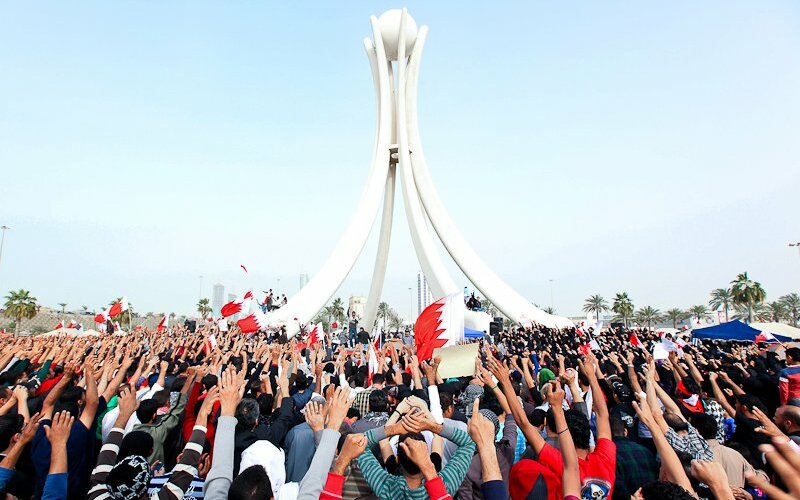
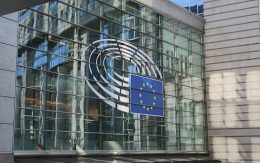
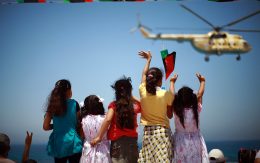

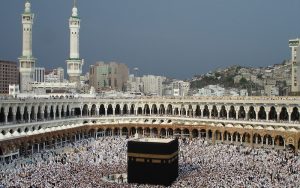
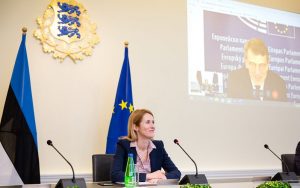


Be First to Comment